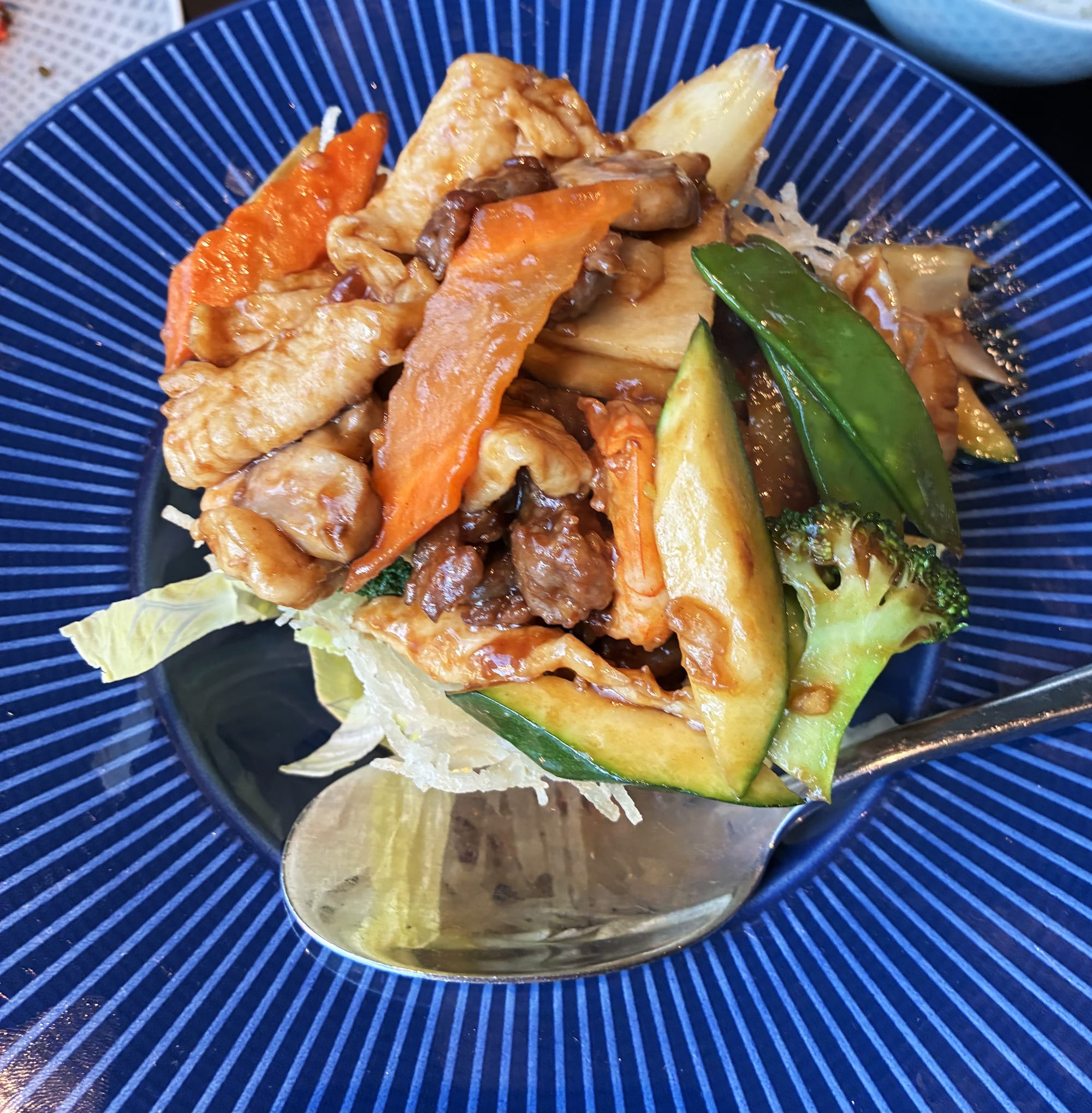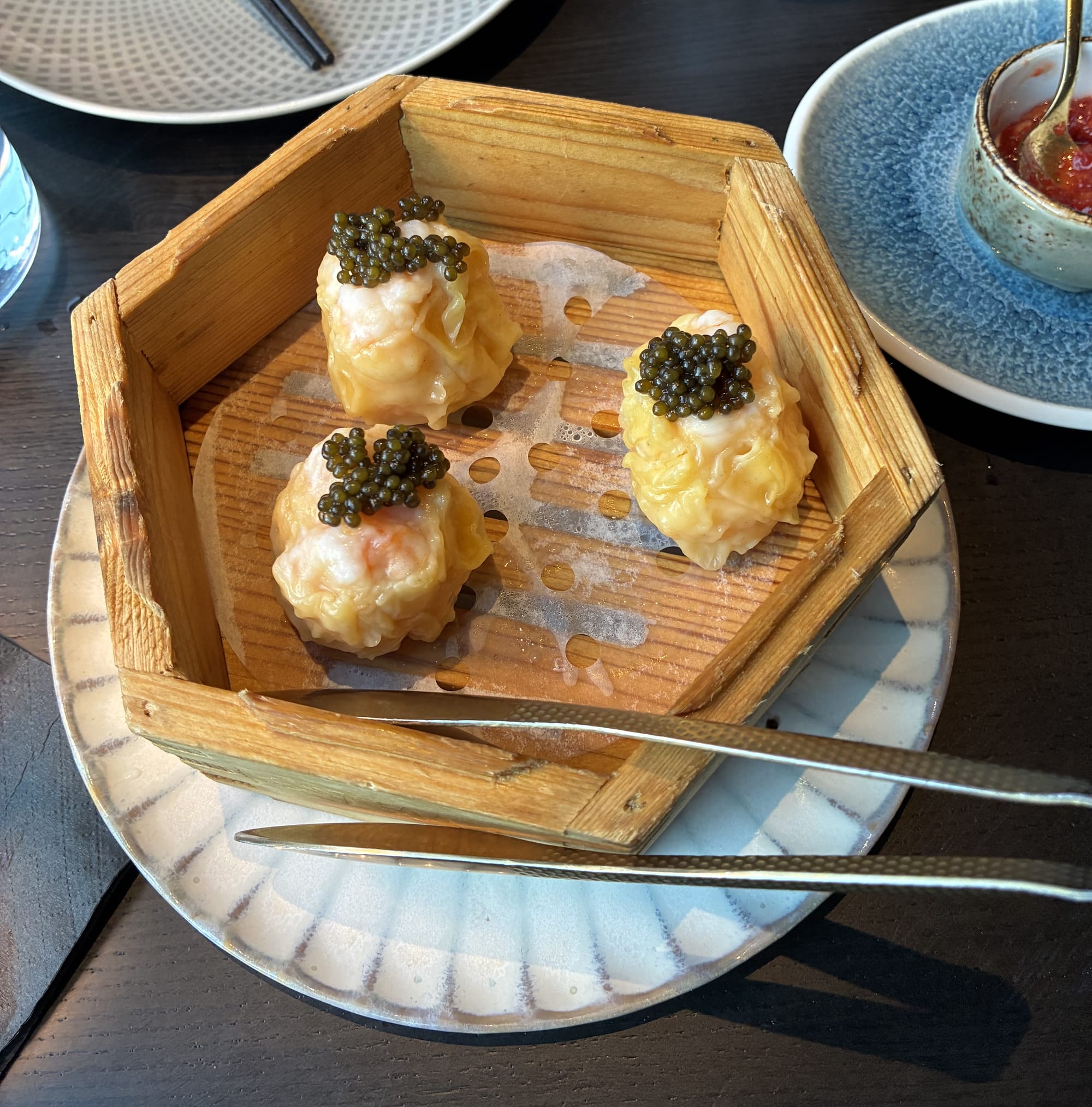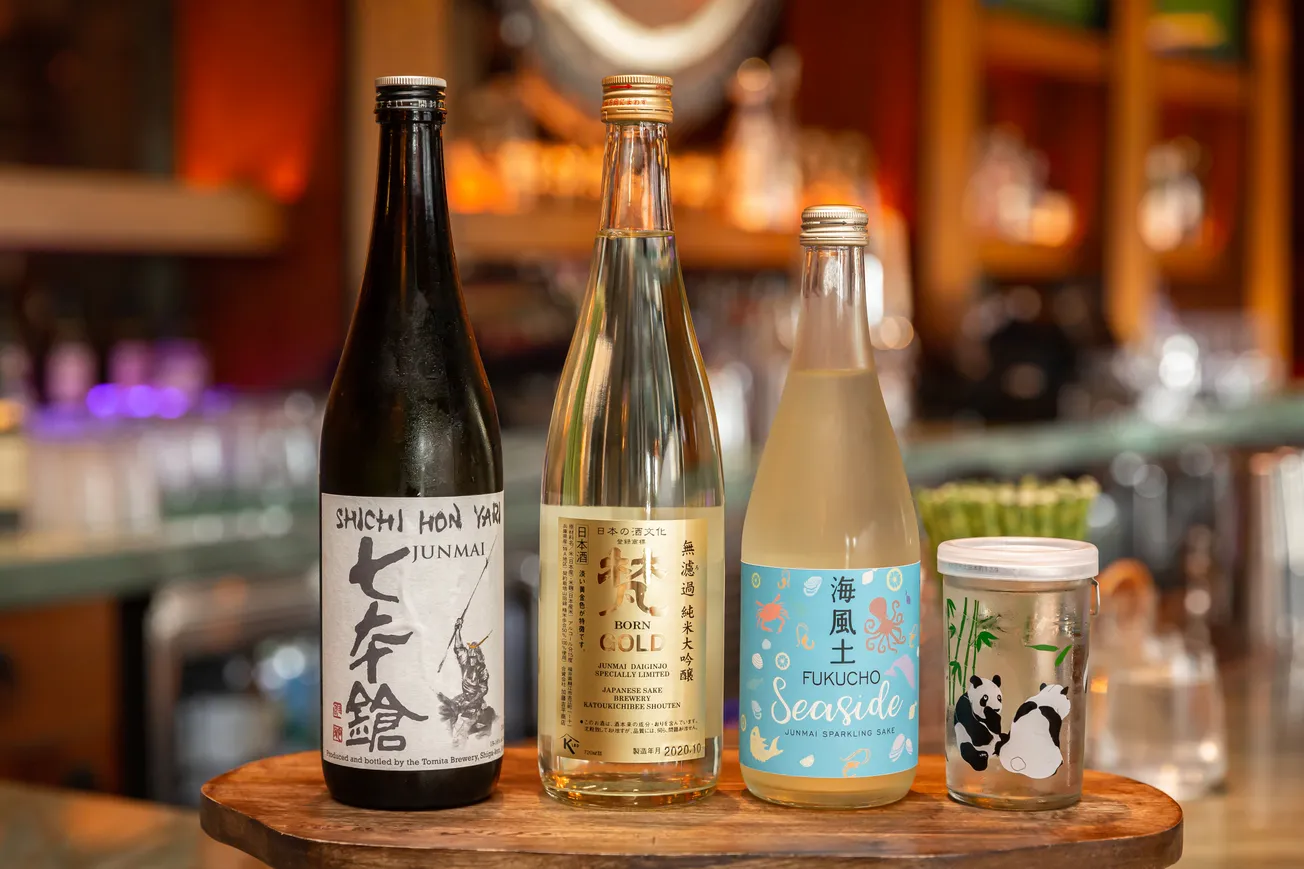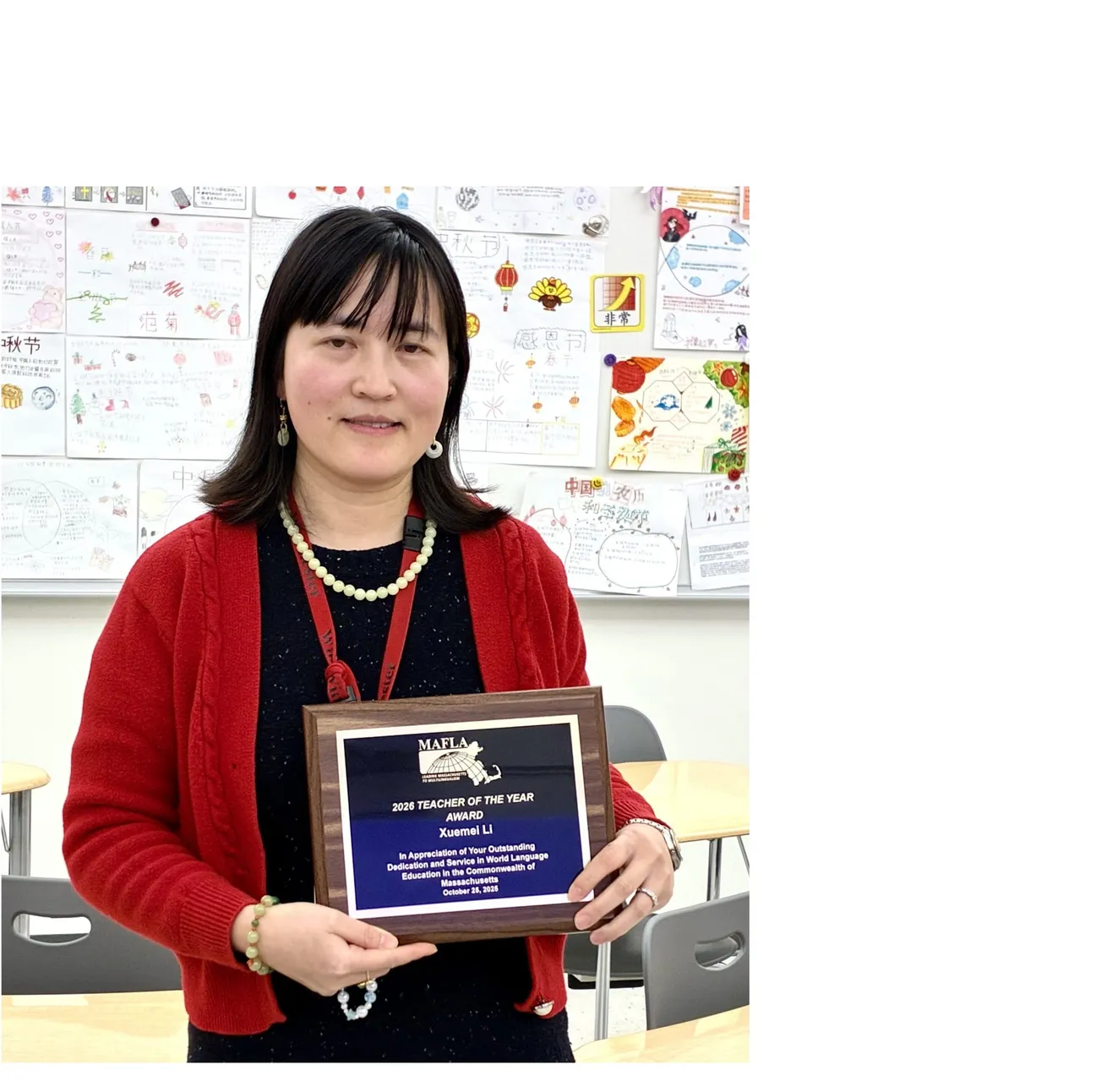Table of Contents
I have little context for sake. I tried it once a decade, well, actually a lot of decades ago and I wasn’t a fan, so I never thought to try it again.
It didn’t really occur to me that I was young and what I tried was probably the Boone’s Farm of sake (no offense Boone’s Farm). So when I found out Karma was celebrating International Sake Day, which was Oct. 1 (and coincidentally my anniversary) I thought why not.
It was a good decision.
First, if you like Asian food and particularly Asian/French fusion, then you can’t beat Karma for dinner. Secondly, I discovered that I do in fact like sake. I just like good sake. I had a similar experience with red wine. For years I didn’t think I liked red wine. It was too dry, too watery, too … not good. Then, out to dinner with friends, someone ordered a bottle of very good red wine and surprise – I really liked red wine! Still do.
I had two glasses of sake. Our waiter suggested the first one because, he said, it’s a good starter sake. It was on the fruitier side, which I like. It was actually quite plummy, probably because it’s called Tozai Plum Sake. It was a little reminiscent of a moscato, which is quite sweet, and it took me off guard because I wasn’t expecting that. It was pretty full bodied but also ice cold and refreshing. I always thought sake was served warm. Turns out there is cold sake and warm sake.
And sake is an intriguing little brew.
The technique of fermenting rice into alcohol was first developed by the Chinese, but then it got to Japan sometime around 300 BC or for the non-religious, BCE, where it was eventually perfected into what we know today as sake. And count yourselves lucky you’re drinking it today and not a millennial ago – you don’t even want to know how some of the earliest sake was fermented.

I drank the Tozai Plum Sake while we noshed on Royal Steamed Shu Mai, handmade shrimp dumplings topped with a smattering of caviar (which I recommend). My second glass of sake came with our order of shrimp Pad Thai and Happy Family, which I admit I ordered mainly for the “crispy potato birds nest” that it’s served in - it did not disappoint. The chicken and steak in that dish were like butter and the shrimp and scallops were just as tasty.
Heavensake, Junmai 12, which was also a little on the sweet side, but had a hint of pear and a white vermouthy-kind of finish. Also cold, clean and refreshing and interestingly neither the Heavensake nor the plum sake tasted like alcohol as we essentially know it.
I mean when we have an alcoholic beverage you pretty much know it – but these come with no kick. They could have been a lovely punch or soft drink (though they were not fizzy), which I imagine makes them dangerous or maybe not.
Because I don’t know much about sake, I went to an expert, Luis Florez who is the beverage director for Karma Asian Fusion and general manager for Yoshida Omakase, who was kind enough to do a little Q&A:
Winchester News: How do you curate sake for Karma? What do you look for in a good sake?
Luis Florez: At Karma, our sake selection is curated with the same care and intentionality as our sushi menu. We aim to offer a balance of styles — from crisp and dry to aromatic and silky — to complement the range of flavors in our dishes.
When selecting sake, I look at several factors: the rice polishing ratio (which affects flavor and texture), the style (such as Junmai, Ginjo, Daiginjo), the producer’s philosophy, and how well it pairs with specific items on our menu. Ultimately, a good sake should have harmony — it should be clean, expressive, and food-friendly.
WN: How, in general, is Sake made?
LF: Sake is brewed more like beer than wine or spirits. It’s made from four basic ingredients: rice, water, yeast, and koji mold. The rice is polished to remove outer layers, then fermented in a process that converts starch to sugar and sugar to alcohol simultaneously — something unique to sake.
Unlike whiskey or some wines, most sake is meant to be enjoyed young and fresh, ideally within a year of bottling. There are some aged sakes (called koshu), but aging is the exception rather than the rule. These tend to have deeper, nutty or sherry-like flavors and are often enjoyed more as a specialty or pairing option.
WN: Are there seasonal favorites -- like beer and wine?
LF: Absolutely. Japan has a strong tradition of seasonal sake. For example, in the winter, you'll find shinshu or freshly pressed sake, which is bold and lively. In spring, unpasteurized namazake is popular — bright, slightly fizzy, and refreshing. In the fall, hiyaoroshi is a seasonal release that’s been aged over the summer and offers mellow, rounded flavors. At Karma, we rotate some of these seasonal offerings to match the vibe and dishes of the season.
WN: Is it like wine in that there are dishes that one sake might go better with than another?
LF: Yes, pairing sake with food is an art in itself. Because sake has a natural umami character, it often pairs even more seamlessly with Japanese cuisine than wine. For example, a clean Junmai goes beautifully with richer dishes like miso-glazed black cod or pork belly, while a floral Daiginjo enhances delicate nigiri or sashimi.
Our goal at Karma is to make sake approachable, so we’re always happy to guide guests based on their flavor preferences and what they’re eating.

WN: What is your favorite sake and why?
LF: I am glad you asked that. Tomorrow, (Oct. 3) we will be launching our own Karma private label sake, a sale that is exclusive for Karma and you can’t find anywhere else. It took us almost one year to develop this project and we are thrilled to announce it. It is from our friends from Akashi Tai and it is a Daiginjo Genshu. Which means that it’s a highly polished, aromatic, and premium sake that is also undiluted.
You can expect:
- A refined, elegant flavor typical of Daiginjo
- With a bold, concentrated punch from the Genshu style
- Great for sipping on its own or pairing with richer, flavorful dishes like toro, uni, or grilled eel.
Nose - Elegant aroma with subtle notes of honey and white spring flowers.
Palate - A fruity and floral palate with delicate aromas of pear, as well as notes of aniseed to accompany a dry finish.
Type of Rice: Yamadanishiki sake rice from Hyogo Japan
Milling Rate 38%
ABV 17%
I’m not even sure what ABV means, but I do know that while you might have missed International Sake Day, the good news is Karma is always rich with sake.
And if you think you don’t like sake, give it another shot, I did and I’m not sorry! You might even say the opportunity to try it again … was karma.
Chris Stevens is an award-winning journalist who has spent 25 years chasing, editing and photographing stories on the North Shore. She is the co-founder and managing editor of Gotta Know Medford.









